Sony and LG are two companies that occupy an important position in the OLED professional and civil fields respectively.
LG is the most important OLED producer at present, and Sony monopolizes the professional-level OLED monitor market, and has launched the world’s first OLED TV XEL-1. At the same time, the world’s strongest OLED display device is Sony’s. BVM-X300 monitor.
Sony A1's many subversive innovations also incorporate its technology accumulation in the OLED field, which is a leap from professional to civilian use.

The difficulty of OLED lies in? OLED is good, people who like to study the picture quality know. So why not all TV manufacturers are willing to enter the OLED market today? OLED procurement costs are on the one hand, and another reason many people have never thought about is that in the face of the already mature LCD TV market, OLEDs with low reputation are still looking for ways to find their place.

Have to deny image quality is an important consideration, but for the previous OLED industry, image quality is by no means a decisive factor. Manufacturers need to calm down and think again about what they really need for consumers, or potential buyers of OLEDs.
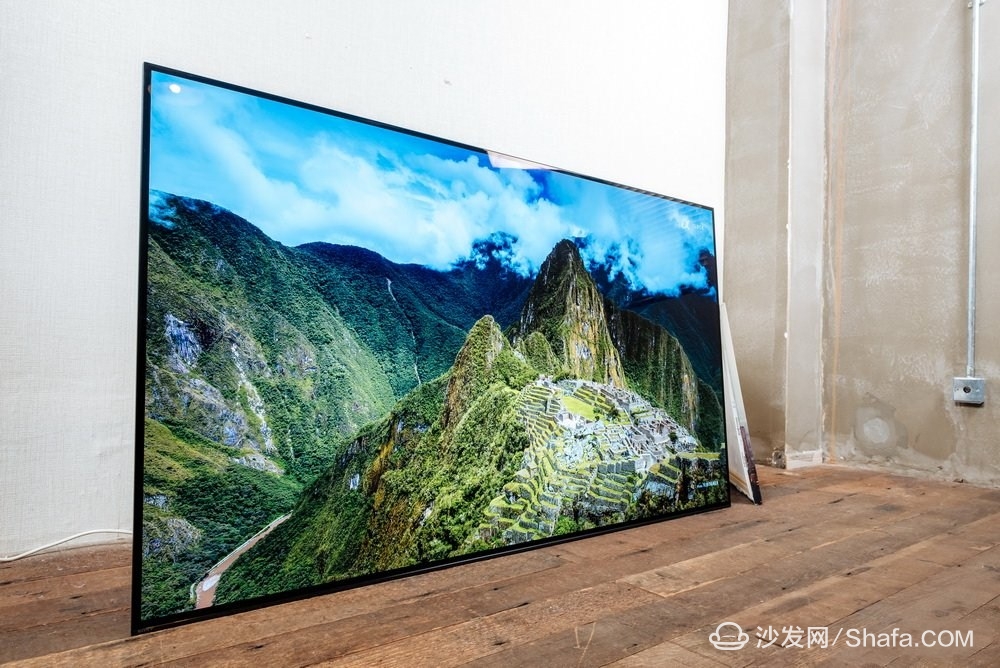

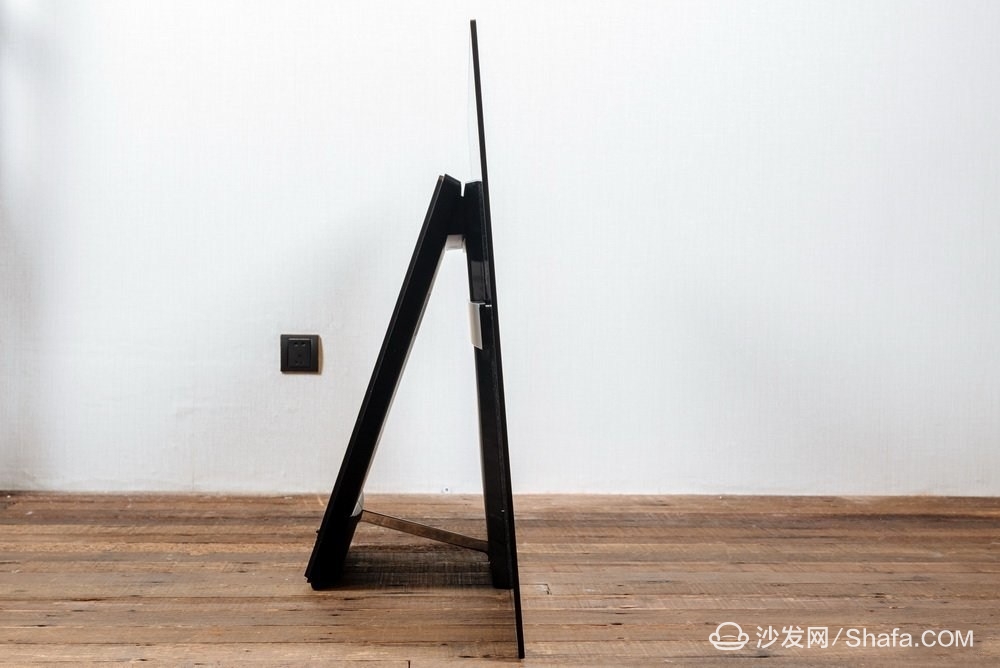
From Sony A1, we can see an answer. It does not rigidly adhere to the traditional form of television. It has used the design without a base for the first time, as well as the well-known concept of "unity of sound and picture." These are the novel elements that you can't find on TV in the past, making the Sony A1 quickly distinguishable from similar products, that is, attracting attention.



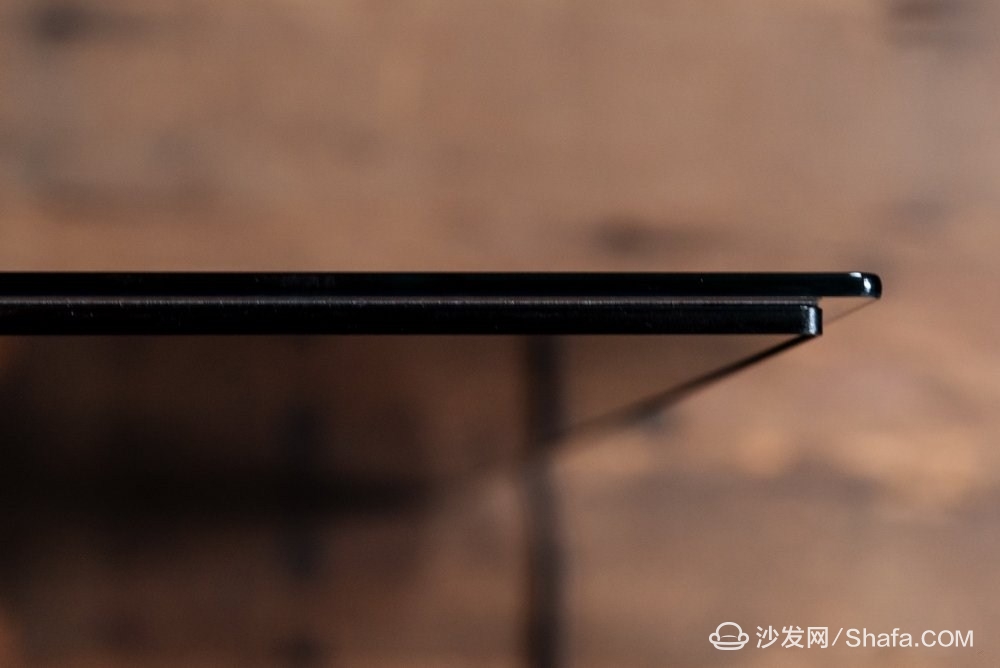
The LG E6 also has similar ideas. For example, it uses a Harman Kardon stereo and is directly at the bottom of the TV. And in the rear of the screen to paste a whole piece of glass, in addition to looking good, but also to strengthen the thin OLED features.
Back to the picture quality, the advantage of OLED is true black level and high contrast, which needless to say. However, compared to LCD, OLED control in the dark part of the color level is still weaker. Before reading the comparison article of the Sony Z9D and other OLED TVs you can understand what is the dark color level control, which greatly affects the TV screen perception.
So today's comparison focuses on the control of the two OLED TVs in the dark color gradation and whether it can bring a novel TV experience.
Difficult to control the dark color level decision who is the king popular speaking, when the signal brightness is below a certain level, the display material is not enough to respond to these low-brightness signals, and thus directly display the wrong black, resulting in many dark parts can not be displayed, this It is the control of dark levels.
LCD TV can solve this problem through the cooperation of backlight and liquid crystal deflection. However, because OLEDs are self-luminous, and the color gamut changes are completely achieved through voltage regulation, solving this problem becomes extremely difficult.
What about the performance of Sony A1 and LG E6? Let's look at the first set of comparisons. The first one is Sony A1, the second one is LG E6, the same below.
Or the old rules, declare in advance. Sony A1 uses a professional movie mode throughout, brightness is adjusted to the maximum, X-tended Dynamic Range is always "high", precision imaging is 20, and the rest remain default. LG E6 uses HDR (standard) mode when playing HDR source, SDR is cinema mode, brightness is maximum, super resolution is "low", others are default. Both TVs have noise reduction and other software enhancements turned off. In short, the comparison environment is consistent.


The LG E6's brightness is lower, and the dark details around it are already black.
The second group is still the scene in Miyako Island.


In contrast, the LG E6 has a greenish hue and a greasy feel. The details in the lower left corner are also black. Guess LG has intentionally enhanced the contrast in order to enhance the perception, but it also caused slight overexposure on the edge of the cloud, while the Sony A1 did not have this problem.
The third group is the 4K Blu-ray Disc Mad Max: A night scene in the Rage Road, also a HDR film source. Different from the first two groups, this is a complete night scene, and it is extremely testful for the reduction of the details of television under low brightness. It should be said that this scene is very harsh for OLED.


Sony A1 not only can maintain a very wide range of dynamic details, but also sharp picture, simple and true color reproduction, without excessive rendering, can be described as the right benefits. At least in the existing TV memory, the brain has not been able to supplement this picture. Perhaps the LCD TV can make up for more details in the shadows, but can it achieve a fascinating contrast with this Sony A1? Can't. So only in this scenario, Sony A1 is the strongest representative.
In order to help you understand the dark level control more easily, you can compare the following set of scenes. This is a screen shot taken when the screen is gradually dark, which can better explain what happens when the dark levels do not perform well.


Specially asked Sony engineers, they do have a special optimization of the OLED's dark part color scale problem, after all, Sony also has many years of experience in the professional OLED field. These experiences were incorporated into the X1 Advanced Graphics chip, which intensified the accurate reduction of low-brightness signals in the circuit section.
So I believe you will understand that the quality of an OLED TV is actually more difficult than liquid crystal. The first step is the level of shadows. In addition to improving the OLED panel, late circuit compensation is also crucial, and Sony undoubtedly has the undisputed advantage of the latter.
Doing OLED color management is difficult?
The answer is, hard.
Regardless of the low luminous efficiency of the blue OLED, it is difficult for the RGB of the RGB three-color scheme to control the white balance. The OLED-based white OLED+ color filter solution, due to the addition of white sub-pixels, also causes color control to become difficult. All in all, due to the obvious deficiency of the quality of OLED luminescent materials, OLED color tuning is also quite a gateway. This is why Sony will develop STE OLEDs in the professional field.
Returning to the topic, OLED is not as good as it was supposed to be. Although it has superb black levels and contrast, you can't see OLED every day. So how does Sony and LG deal with this difficult situation? The following scene is still taken from the 4K Blu-ray Disc Miyakojima and the crazy Max: violent road, the first in the same group is Sony A1, the second is LG E6.


In summary, LG E6 has a very traditional OLED style, namely thick, saturated and slightly oily colors. Given that LG has been aggressively promoting OLEDs in recent years, people may naturally have generated the strange impression that "this is OLED." But today there is Sony A1 contrast, people should be able to wake up a reason OLED is not the case.












Although it was impossible to find a monitor for reference, the Sony A1 did meet most people's understanding of true colors, and was more inclined to Sony's color style in comparison with the LG E6.






Indeed, for a picture such as the night sky, civilian TVs are difficult to perform perfectly. Low-brightness can easily become a hard-hit area for signal compression. Therefore, the details of the LG E6 have become fragmented, blurred in outline and inaccurate in color.
The performance of the Sony A1 remains steady and there is no excessive manual handling of this area. At the very least, the details are clearly visible and the edge contours of the objects can be identified, which is rare for OLEDs.






Finally, attach the Sony A1 and LG E6's screen pixel arrangement close-up:

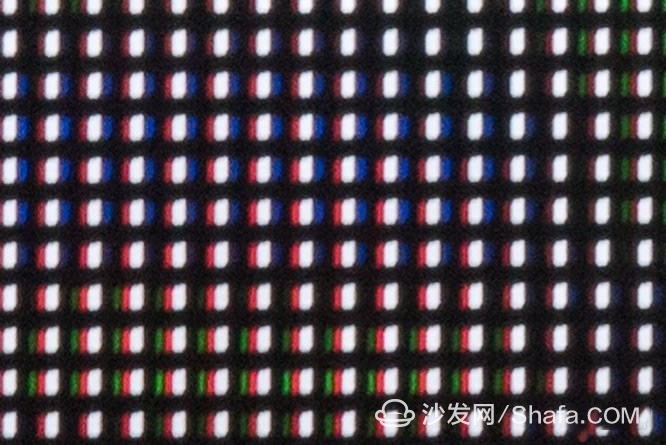
Sony's unity of sounds and pictures is not a gimmick. Many people will feel very vague about the so-called concept of "unity of sound and drawing" and even think it is a marketing gimmick. Once you compare Sony A1 and other TV's built-in speakers, you should not think so.
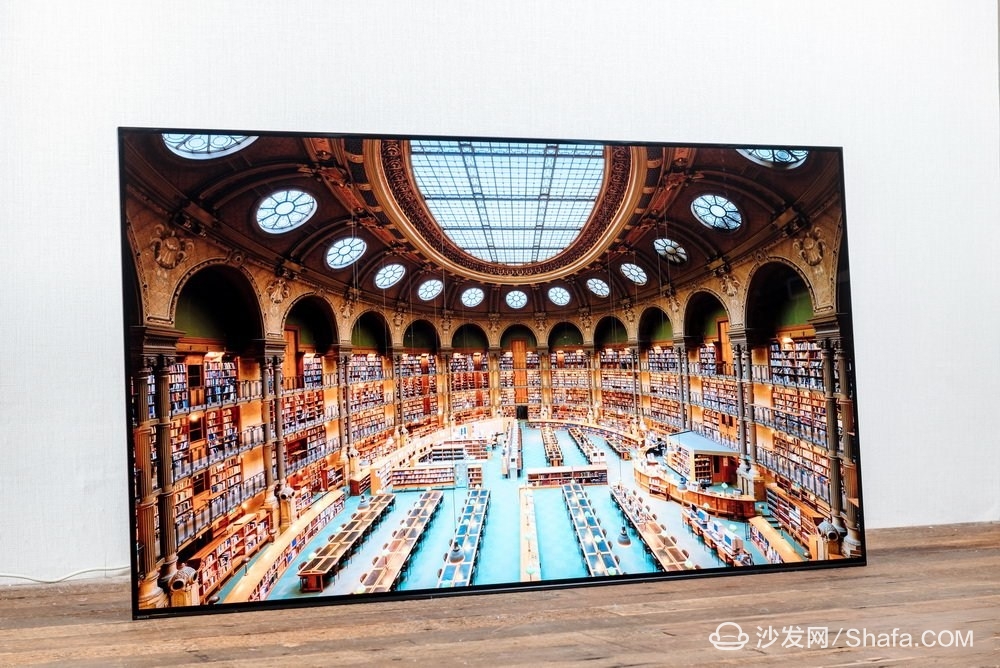
In essence, the combination of sound and drawing emphasizes the improvement of a three-dimensional sound. The usual TV speakers are only mounted on the bottom of the fuselage, which can cause serious "misplacement" of sound and picture. The characters on the TV screen are talking and the sound is coming from the bottom of the TV. This is the reason why the sound sounds stereoscopic.

While the Sony A1 uses an OLED panel, there is no backlight component, which makes the screen itself a speaker. The screen is sounded by the drive unit on both sides of the back bar. In this way, the sound and the picture are completely synchronized and integrated. Sitting in front of Sony A1, you can feel the sound coming from the entire screen. In addition to Sony's unique DSP and vibration technology, sound can be sent from various areas of the screen to further enhance the sense of positioning.

Therefore, Sony A1 and LG E6 are certainly not on the same level in terms of the breadth of sound, or the sense of oppression of sound. The Harman Kardon sound used by the LG E6 is indeed superior to the built-in speakers of ordinary TVs. But the Sony A1 is much better at locating and resolving the sound. Regardless of the dialogue between the characters or the explosive sound in the movie, the kind of sound that stands up perfectly echoes the picture and is obviously more contagious.
In addition, the Sony A1 has a full range of home audio systems, including subwoofers, and the support behind it is a subwoofer, which provides a full sound system for movie sound effects. It can be described as thick, flexible, and clear. This is a kind of voice that will be addictive when heard. Any Soundbar is not enough to restore this stereoscopic sound experience. Although they will have a better performance in sound quality, their sound is not integrated with the picture, but it is staggered.
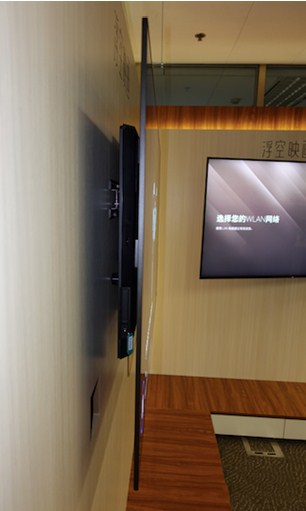
Although we have seen many Sony A1 flat poses, it is actually a TV that is very suitable for wall hangings. The foldable stand, even if hung on the wall, will not affect its sound performance.
At the same time, the distance from the TV screen to the wall is about 10 centimeters, which is similar to ordinary LCD TVs, but better than curved TVs.
This distance does not stop the output of the subwoofer, so the wall can also ensure that there is no loss of sound quality. You can install the Sony A1 to the level of your line of sight, to better experience its concept of sound and picture, and LG E6 can not do this.
OLED, is to let us sum up under the Sony A1 has a very good dynamic range, excellent shades of color scale performance, Zhongzheng color reproduction, fine details of the show, coupled with minimalist design without base and audio and video together The experience of one has the most outstanding quality, sound quality and design of current OLED TVs.
LG E6 is a limited dynamic range, slightly less than the dark color level performance, high saturation color reproduction, the general performance of the details, but with ultra-thin thickness and Harman Kardon sound.
If the price point of view, the same as 65 inches, Sony A1 is only 35,999 yuan, while the LG E6 is as high as 39,999 yuan. The answer is very clear, Sony A1's price is lower, but it has a better performance. If we don't blow it, we will speak with the truth. Sony's performance does exceed LG.
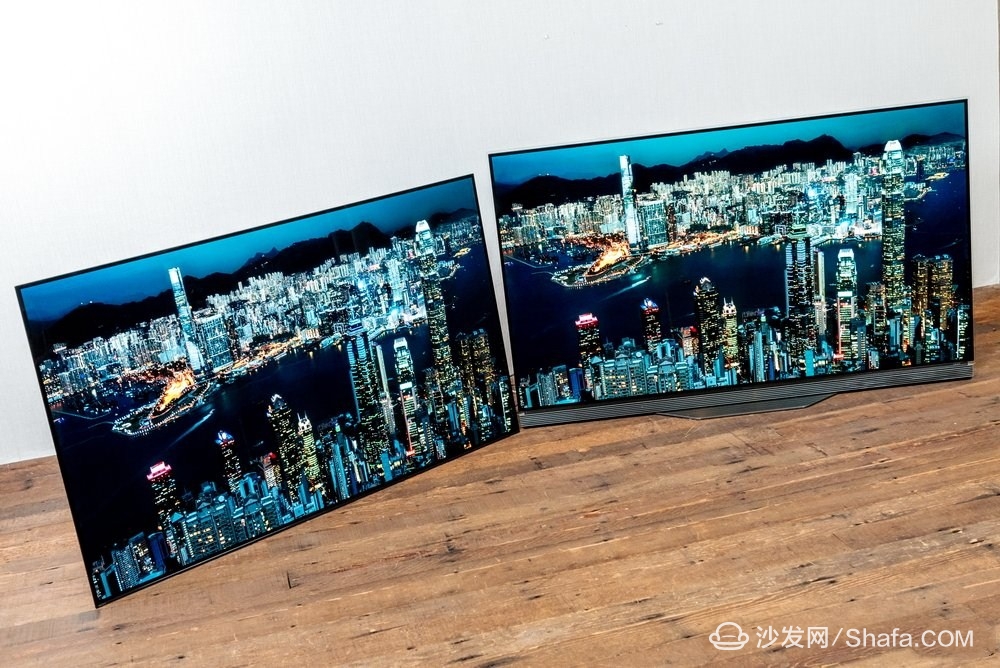
As mentioned at the beginning, the current OLED TV market desperately needs a different product. It must not only have excellent picture quality, but also be unique in design and even overall experience.
Apparently, the Sony A1 is such a product that is unwilling to be mediocre and has differentiated products that are different from its competitors.
This is Sony, a Sony that dares to challenge.
Smart TV/box information can focus on smart TV information network sofa butler (http://), China's influential TV box and smart TV website, providing information, communication, TV boxes, smart TVs, smart TV software, etc. Answering questions.
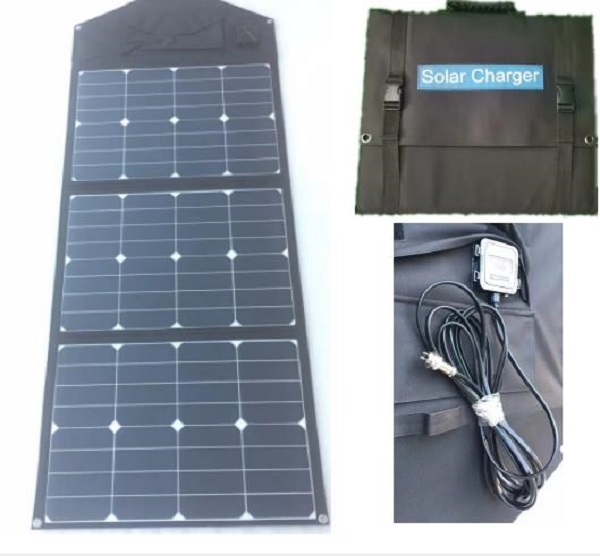
LG is the most important OLED producer at present, and Sony monopolizes the professional-level OLED monitor market, and has launched the world’s first OLED TV XEL-1. At the same time, the world’s strongest OLED display device is Sony’s. BVM-X300 monitor.
Sony A1's many subversive innovations also incorporate its technology accumulation in the OLED field, which is a leap from professional to civilian use.

Sony A1 (left) and LG E6 (right)
It is because of the deep background of Sony and LG in different fields that people cannot ignore the two vendors. In particular, after Sony entered the OLED TV market again this year, the outstanding performance of A1 may also allow competitors to feel unusual pressure. This is also the reason why the Sony A1 and LG E6 two OLED high-end products are compared. Of course, what is more important is that people will both care about Sony and LG. What is the difference between the two OLED TVs? The difficulty of OLED lies in? OLED is good, people who like to study the picture quality know. So why not all TV manufacturers are willing to enter the OLED market today? OLED procurement costs are on the one hand, and another reason many people have never thought about is that in the face of the already mature LCD TV market, OLEDs with low reputation are still looking for ways to find their place.

Sony A1 (left) and LG E6 (right)
After all, when LCDs replaced CRTs, they were not relying on image quality, but rather flat-screen TV concepts such as large size and thinness. And in the form of OLED with LCD and no two can not catch the eye of consumers for the first time, then rely on quality? Question How many consumers know how to distinguish picture quality? Have to deny image quality is an important consideration, but for the previous OLED industry, image quality is by no means a decisive factor. Manufacturers need to calm down and think again about what they really need for consumers, or potential buyers of OLEDs.







Back to the picture quality, the advantage of OLED is true black level and high contrast, which needless to say. However, compared to LCD, OLED control in the dark part of the color level is still weaker. Before reading the comparison article of the Sony Z9D and other OLED TVs you can understand what is the dark color level control, which greatly affects the TV screen perception.
So today's comparison focuses on the control of the two OLED TVs in the dark color gradation and whether it can bring a novel TV experience.
Difficult to control the dark color level decision who is the king popular speaking, when the signal brightness is below a certain level, the display material is not enough to respond to these low-brightness signals, and thus directly display the wrong black, resulting in many dark parts can not be displayed, this It is the control of dark levels.
LCD TV can solve this problem through the cooperation of backlight and liquid crystal deflection. However, because OLEDs are self-luminous, and the color gamut changes are completely achieved through voltage regulation, solving this problem becomes extremely difficult.
What about the performance of Sony A1 and LG E6? Let's look at the first set of comparisons. The first one is Sony A1, the second one is LG E6, the same below.
Or the old rules, declare in advance. Sony A1 uses a professional movie mode throughout, brightness is adjusted to the maximum, X-tended Dynamic Range is always "high", precision imaging is 20, and the rest remain default. LG E6 uses HDR (standard) mode when playing HDR source, SDR is cinema mode, brightness is maximum, super resolution is "low", others are default. Both TVs have noise reduction and other software enhancements turned off. In short, the comparison environment is consistent.


Sony A1 (upper) and LG E6 (lower)
This set of scenes originated from 4K Blu-ray disc Miyakojima Island and is a HDR film source. The two televisions showed obvious differences in this scenario. Look closely at the picture of Sony A1. In the bottom right corner, you can still recognize some details, including the bridge, including a small piece of bush. Explain that Sony has the ability to ensure that details in the shadows are not lost. The LG E6's brightness is lower, and the dark details around it are already black.
The second group is still the scene in Miyako Island.


Sony A1 (upper) and LG E6 (lower)
Can observe the lower left corner of the screen, Sony A1 still has clear details, smooth color transitions, the entire screen looks more transparent. In contrast, the LG E6 has a greenish hue and a greasy feel. The details in the lower left corner are also black. Guess LG has intentionally enhanced the contrast in order to enhance the perception, but it also caused slight overexposure on the edge of the cloud, while the Sony A1 did not have this problem.
The third group is the 4K Blu-ray Disc Mad Max: A night scene in the Rage Road, also a HDR film source. Different from the first two groups, this is a complete night scene, and it is extremely testful for the reduction of the details of television under low brightness. It should be said that this scene is very harsh for OLED.


Sony A1 (upper) and LG E6 (lower)
The differences in this group are equally huge. The performance of the LG E6 is already at a bottleneck, and the Sony A1 shows the precise details like textbooks. Of course, this description is more exaggerated, A1 is not an OLED monitor after all, but compared to the competitors, A1's picture is quite surprising. Sony A1 not only can maintain a very wide range of dynamic details, but also sharp picture, simple and true color reproduction, without excessive rendering, can be described as the right benefits. At least in the existing TV memory, the brain has not been able to supplement this picture. Perhaps the LCD TV can make up for more details in the shadows, but can it achieve a fascinating contrast with this Sony A1? Can't. So only in this scenario, Sony A1 is the strongest representative.
In order to help you understand the dark level control more easily, you can compare the following set of scenes. This is a screen shot taken when the screen is gradually dark, which can better explain what happens when the dark levels do not perform well.


Sony A1 (upper) and LG E6 (lower)
Focusing on the lower right corner of the screen, LG E6 has a lot of abnormal black "stains". This is precisely because OLED can't display those subtle brightness signals. The result is very affecting the perception. Specially asked Sony engineers, they do have a special optimization of the OLED's dark part color scale problem, after all, Sony also has many years of experience in the professional OLED field. These experiences were incorporated into the X1 Advanced Graphics chip, which intensified the accurate reduction of low-brightness signals in the circuit section.
So I believe you will understand that the quality of an OLED TV is actually more difficult than liquid crystal. The first step is the level of shadows. In addition to improving the OLED panel, late circuit compensation is also crucial, and Sony undoubtedly has the undisputed advantage of the latter.
Doing OLED color management is difficult?
The answer is, hard.
Regardless of the low luminous efficiency of the blue OLED, it is difficult for the RGB of the RGB three-color scheme to control the white balance. The OLED-based white OLED+ color filter solution, due to the addition of white sub-pixels, also causes color control to become difficult. All in all, due to the obvious deficiency of the quality of OLED luminescent materials, OLED color tuning is also quite a gateway. This is why Sony will develop STE OLEDs in the professional field.
Returning to the topic, OLED is not as good as it was supposed to be. Although it has superb black levels and contrast, you can't see OLED every day. So how does Sony and LG deal with this difficult situation? The following scene is still taken from the 4K Blu-ray Disc Miyakojima and the crazy Max: violent road, the first in the same group is Sony A1, the second is LG E6.


Sony A1 (upper) and LG E6 (lower)
The difference in the color bias of the two TVs is still very obvious, and differences can be found without too much contrast. In summary, LG E6 has a very traditional OLED style, namely thick, saturated and slightly oily colors. Given that LG has been aggressively promoting OLEDs in recent years, people may naturally have generated the strange impression that "this is OLED." But today there is Sony A1 contrast, people should be able to wake up a reason OLED is not the case.




Sony A1 (upper) and LG E6 (lower)
In color, Sony A1 and LG E6 presented different results. Sony A1's color is very plain, there is no trace of excessive human addition. Its dynamic range is very broad, which is extremely rare in OLED TVs, enough to take into account clear highlight details and shadow details. Dynamic range is a very important feature of HDR. Because HDR can reproduce a wider dynamic range than SDR signal, the picture that we see with human eyes becomes more realistic. As an HDR TV, Sony A1 undoubtedly has an overwhelming advantage in the restoration of dynamic range. 

Sony A1 (upper) and LG E6 (lower)
This set of scenes can be observed under the girl's silver hair, Sony A1 more glossy detail, looks crystal clear. The color of the LG E6 is quite greasy, and the white is also mingled with faint green color and impure purity. This is the difference between different manufacturers in color tuning, or the reduction of real details. This includes not only the color, but also the brightness, contrast, etc. of the source signal, all of which are faithfully reproduced, instead of changing the signal like MSG. Original appearance. 

Sony A1 (upper) and LG E6 (lower)
It is true that at first glance, the high saturated color of LG E6 will be very pleasing. This rich style does attract eyeballs, but this is obviously contrary to the original intention of color reproduction. Just like HiFi, people at the beginning will pursue the toxicity of the sound, but after accumulating enough taste, you will still embark on the path of seeking true reduction. The green and red of the LG E6 are very bizarre, with high red saturation and overflow, and no matter what the scene has a green lingering. 



Sony A1 (upper) and LG E6 (lower)
For example, in the above group of scenes, the sea color of LG E6 is very erratic and reminiscent of the eutrophication of seawater. This is obviously not the color that clean seawater should have. The green plant is also like a plastic sheet. The color is very blunt. It is not as green as the Sony A1. Although it was impossible to find a monitor for reference, the Sony A1 did meet most people's understanding of true colors, and was more inclined to Sony's color style in comparison with the LG E6.


Sony A1 (upper) and LG E6 (lower)
In addition, during the comparison process, three groups of relatively large details were found, one group of details about retention, one group about color gradation, and one group of related noise reduction, as follows: 



Sony A1 (upper) and LG E6 (lower)
This group fully demonstrated the incorrectness of color oversaturation, mistakenly rendered some colors that should not be rendered, and also displayed the weakness of LG E6 in detail retention. Indeed, for a picture such as the night sky, civilian TVs are difficult to perform perfectly. Low-brightness can easily become a hard-hit area for signal compression. Therefore, the details of the LG E6 have become fragmented, blurred in outline and inaccurate in color.
The performance of the Sony A1 remains steady and there is no excessive manual handling of this area. At the very least, the details are clearly visible and the edge contours of the objects can be identified, which is rare for OLEDs.




Sony A1 (upper) and LG E6 (lower)
In this group, the Sony A1 equipped with an X1 advanced chip again has an overwhelming performance. The 14bit HDR smooth gradation technology fully compensates for the difference in color transitions, and the ribbon phenomenon is very slight. This is also the secret to make the picture more real. 

Sony A1 (upper) and LG E6 (lower)
Noise reduction processing is also Sony's strong point. The dual database engine provided with the X1 Advanced Edition can replace noise and minimize loss of effective details. As a result, the Sony A1 can get a purer night sky instead of being full of red and green noise like the LG E6. Finally, attach the Sony A1 and LG E6's screen pixel arrangement close-up:


Sony A1 (upper) and LG E6 (lower)
It can be seen that the pixel arrangement of Sony A1 and LG E6 are RWBG combinations. Obviously, the two TVs use almost the same panel, but Sony's picture quality is even better, which is enough to show that Sony's deep accumulation of OLED technology. Sony's unity of sounds and pictures is not a gimmick. Many people will feel very vague about the so-called concept of "unity of sound and drawing" and even think it is a marketing gimmick. Once you compare Sony A1 and other TV's built-in speakers, you should not think so.



In addition, the Sony A1 has a full range of home audio systems, including subwoofers, and the support behind it is a subwoofer, which provides a full sound system for movie sound effects. It can be described as thick, flexible, and clear. This is a kind of voice that will be addictive when heard. Any Soundbar is not enough to restore this stereoscopic sound experience. Although they will have a better performance in sound quality, their sound is not integrated with the picture, but it is staggered.

At the same time, the distance from the TV screen to the wall is about 10 centimeters, which is similar to ordinary LCD TVs, but better than curved TVs.
This distance does not stop the output of the subwoofer, so the wall can also ensure that there is no loss of sound quality. You can install the Sony A1 to the level of your line of sight, to better experience its concept of sound and picture, and LG E6 can not do this.
OLED, is to let us sum up under the Sony A1 has a very good dynamic range, excellent shades of color scale performance, Zhongzheng color reproduction, fine details of the show, coupled with minimalist design without base and audio and video together The experience of one has the most outstanding quality, sound quality and design of current OLED TVs.
LG E6 is a limited dynamic range, slightly less than the dark color level performance, high saturation color reproduction, the general performance of the details, but with ultra-thin thickness and Harman Kardon sound.
If the price point of view, the same as 65 inches, Sony A1 is only 35,999 yuan, while the LG E6 is as high as 39,999 yuan. The answer is very clear, Sony A1's price is lower, but it has a better performance. If we don't blow it, we will speak with the truth. Sony's performance does exceed LG.

Apparently, the Sony A1 is such a product that is unwilling to be mediocre and has differentiated products that are different from its competitors.
This is Sony, a Sony that dares to challenge.
Smart TV/box information can focus on smart TV information network sofa butler (http://), China's influential TV box and smart TV website, providing information, communication, TV boxes, smart TVs, smart TV software, etc. Answering questions.
The reason why portable Solar Panels are most popular is that you can use them on camping. these small solar panels will give you the electricity to run your appliances during camping in remote areas. it is the best way to use it. due to their portability, they are easy to carry on and easy to set up.

portable solar panels for camping, solar powered powerbank, portable solar power station, solar camping power, portable solar power
Jiangxi Huayang New Energy Co.,Ltd , https://www.huayangenergy.com